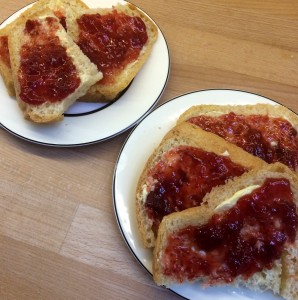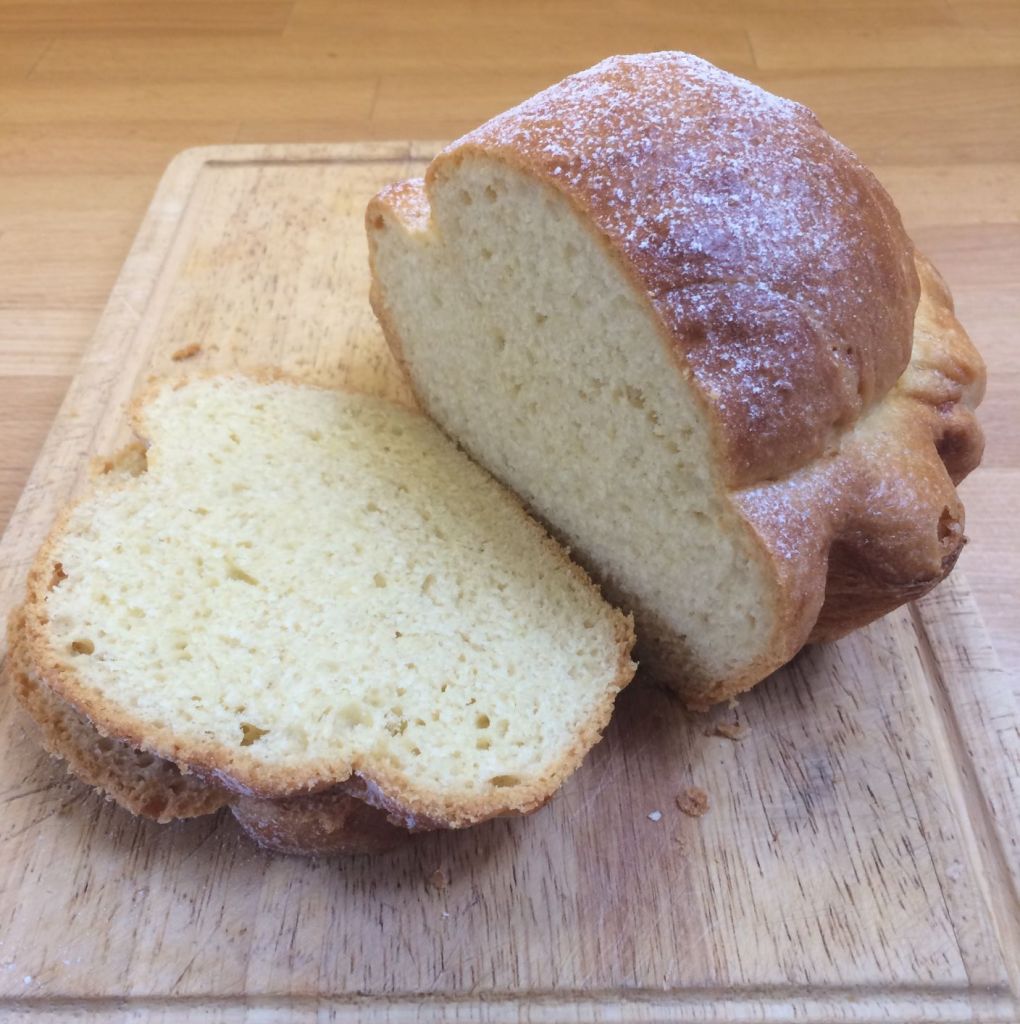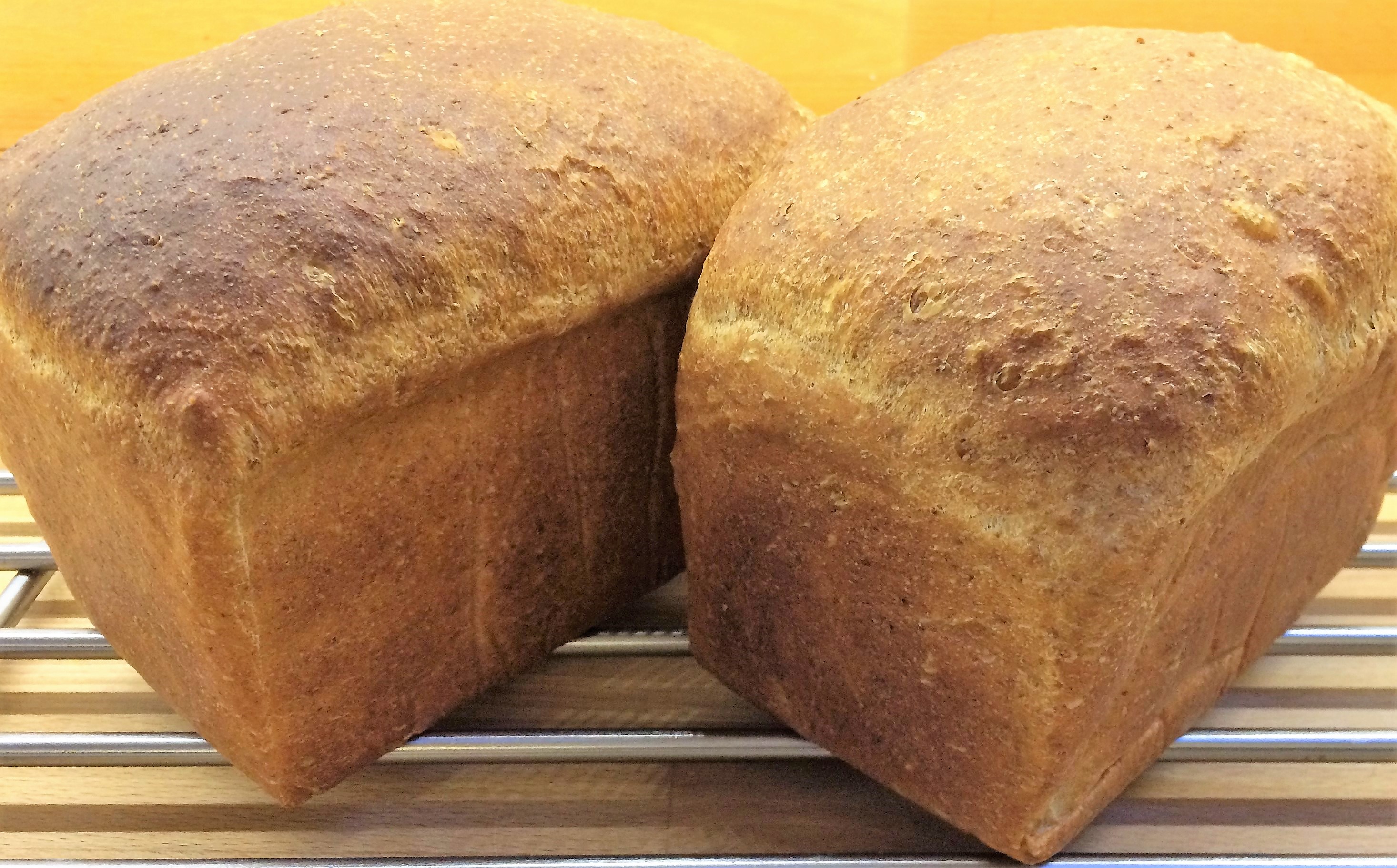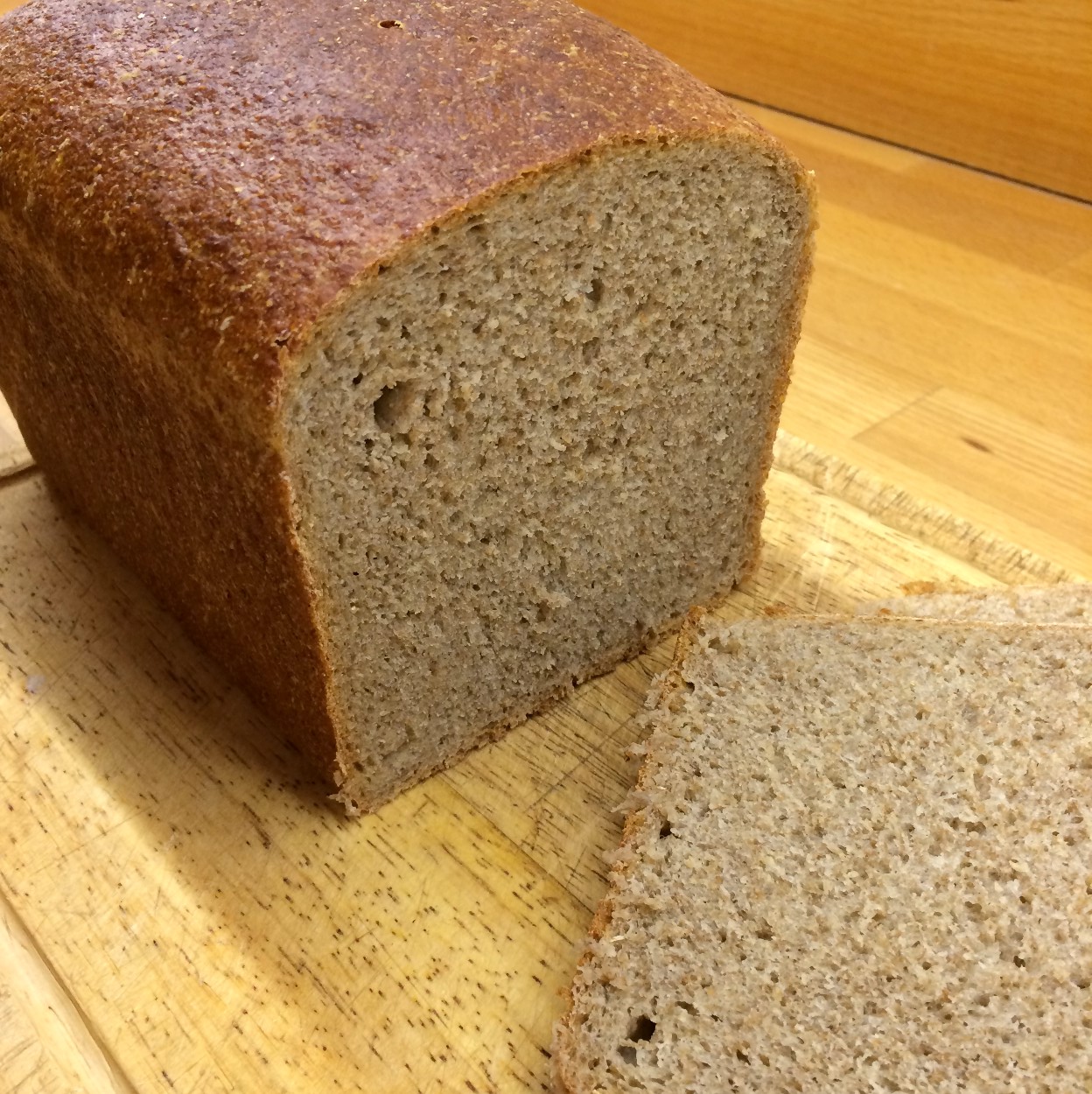Recipe for Brioche
Brioche is a versatile bread dough that has been enriched with butter and eggs. It can be baked into a loaf, either in a rectangular tin or a round tin with fluted sides (for the traditional brioche à tête). It also makes excellent burger buns or rolls for hot dogs.
‘Classic’ brioche dough is a bit more complex than this simple formula and is best made over two days (with an overnight rest in a cold place). If you try this recipe, you’ll find that it’s a very easy dough to make and bake. It’s the enriched dough equivalent of an all-in-one sponge. This recipe makes a small loaf (1lb tin), four buns or six small rolls and can easily be scaled up if you require more dough. The dough can also be used as though it were pastry for dishes such as saucisse en brioche.
Ingredients

- 200g strong white bread flour
- 100g butter
- 2 large eggs + 2 tbsp (30 ml) milk
- 1 tsp (4 g) ‘easy bake’ or instant dried yeast
- ½ tsp salt (¼ tsp if the butter is already salted)
Method

- Break the eggs and beat lightly, setting aside 1 tsp (which you should mix with a splash of milk) for glazing the dough just before it goes into the oven.
- Rub the butter into the flour (I mix mine with the K-beater of my Kenwood Chef stand mixer) until the mixture resembles coarse breadcrumbs. Add the eggs, milk, yeast and salt. Mix at a moderate speed for five minutes. If the dough forms up around the beater, stop the mixer, scrape it off and switch to a dough hook. It starts out looking like a stiff cake mix, but as the gluten strands form during mixing, you’ll see a change in the dough. Once the dough is mixed, gather everything into a ball of smooth, stretchy, dough.
- Cover the dough and leave the bowl in a warmish place (20°C to 25°C) for 2-3 hours, or until the dough has doubled in volume.
- Mix or knead the dough again, briefly, and then if making buns or rolls, divide the dough into the required pieces, and roll them into balls. The buns should be flattened, a little, and put on a baking tray to prove, while rolls should be put into the tin (and you can use a muffin tin, but won’t get the traditional pretty shape). If making a loaf, form up the dough and press it into the tin, filling the corners.
- Cover, loosely, and leave to prove for 1-2 hours, or until the dough has doubled in volume. Just before baking, apply the reserved egg wash (and if you’re making burger buns, sprinkle a few sesame seeds over, if liked). Bake in a 190°C oven: 20 minutes for rolls, 25 minutes for buns or 30 minutes for a loaf. When baked, turn them out to cool.
Notes
- You can bake a simply-shaped loaf in a rectangular tin with the dough in one piece. Alternatively, you can divide the dough into three and roll them into strips about 25 cm long and then plait them together before placing the plait in the base of the tin to rise. Even simpler, is to divide the dough into 6 or 8 pieces, roll them into small balls and then place them in two rows in the base of the tin to rise.
- The traditional brioche à tête is made by taking three-quarters of the dough and forming a ball. Put it in the base of the round tin and using two fingers from each hand, make a hole in the middle of the ball, right down to the bottom. Shape the remaining quarter of the dough into a smaller ball, and then pull the dough away from one point and form it into a teardrop shape which you drop into the hole in the larger piece.
- When making dough for burger buns (or hot dog rolls), I sometimes make a less rich version, substituting 50 g butter, 1 egg & 100 ml milk for the quantities given above.




This is the last in a short series of articles devoted to baking bread. The others include recipes for Daily Bread and Rye Bread.

